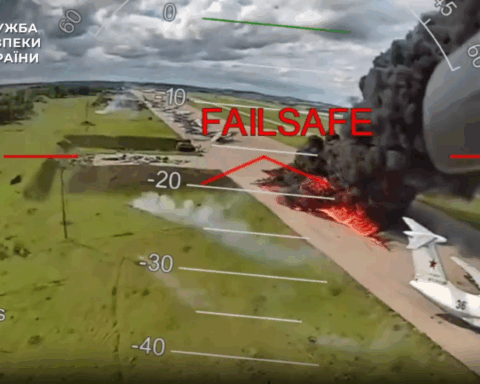OPERATIONAL REMARKS
The OM is currently operating with 22 permanent international Mission members, including the Chief Observer (CO) and one first responder[1]. The Mission is supported administratively by a staff member and the Chief of Fund Administration based in Vienna.
Update on COVID-19 measures
Activities have been impacted by COVID-19 and measures undertaken by the OM to ensure the safety and duty of care of its Mission members and compliance with measures set by the host country authorities. The Mission is continuing to keep the situation under review, in close contact with the OSCE Secretariat and the Chairmanship. Following the host country recommendations, the observers are adhering to social distancing. Due to the preventive measures taken by the central and regional authorities, the OM is faced with certain difficulties, but is still able to continue to fulfil its mandate without any limitations in its observation and reporting activities.
OBSERVATIONS AT THE BORDER CROSSING POINTS
Persons crossing the border
The profile of persons crossing the border can be categorized as follows:
- Adults travelling on foot or by car with little or no luggage.
- Persons in military-style outfits.
- Families (often including elderly persons and/or children) travelling on foot or by car with a significant amount of luggage.
The average number of entries/exits decreased from 8,353 to 8,021 per day at both BCPs compared to last week[2].
During the reporting period, the majority of border crossings were to Ukraine, with an average net flow of 172 per day for both BCPs. The Donetsk BCP continued to experience much more traffic than the Gukovo BCP.
Responding to the COVID-19 situation, the host country has closed its borders for the majority of foreigners starting from 18 March. Among the exceptions of persons allowed to cross the border (which entered into force on 19 March), are Ukrainian citizens and stateless persons holding passports or identification documents proving permanent residence in certain areas of Luhansk and Donetsk regions of Ukraine. In addition, reportedly, due to the threat of the spread of COVID-19, starting from 10 April, the organized passenger transport commuting between the non-government-controlled areas of Luhansk region of Ukraine and the Russian Federation was temporarily suspended and restored from 25 June.
Persons in military-style outfits
During the reporting period, the number of persons in military style outfits crossing the border was four, compared to one last week. Two persons crossed into the Russian Federation while another two crossed into Ukraine. These individuals crossed the border on foot.
Families with a significant amount of luggage
The OTs continued to report on families, sometimes with elderly persons and/or children, crossing the border at both BCPs with a significant amount of luggage, or travelling in heavily loaded cars. During this reporting week, seven families were observed crossing into the Russian Federation while another two families were observed crossing into Ukraine, compared to the previous reporting period when seven families were observed crossing to the Russian Federation, while another two families crossed into Ukraine.
Bus connections
Regular local and long-distance bus connections continued to operate between Ukraine (mostly from/to the Luhansk region) and the Russian Federation. During the reporting period, the OTs observed an increase in the overall number of buses crossing the border at both BCPs (332 compared to 304 observed during the previous week). There were 167 buses bound for the Russian Federation and 165 bound for Ukraine.
On some occasions, the OTs noticed the bus drivers removing the itinerary signs from the windshields of their buses, while some buses did not display their route at all. The majority of long-distance buses commuting between the Luhansk region and cities in the Russian Federation had Ukrainian licence plates issued in the Luhansk region.
Trucks
During the reporting period, the OTs observed a decrease in the overall number of trucks crossing the border at both BCPs (938 compared to 1,047 during the previous reporting week); 540 at the Gukovo BCP and 398 at the Donetsk BCP, 490 of these trucks crossed into the Russian Federation and 448 crossed into Ukraine. Most of the trucks observed by the OTs had Ukrainian licence plates issued in the Luhansk region; however, on a daily basis, the OTs also noted trucks registered in the Russian Federation, Belarus, Ukraine and trucks with “LPR” plates.
The OTs also continued to observe tanker trucks crossing the border in both directions. During the reporting period, the OTs observed a slight decrease in the overall number of tanker trucks crossing the border at both BCPs (46 compared to 53 during the previous reporting week). These trucks were observed crossing the border at both BCPs. The trucks had the words “Propane” and “Flammable” written across the tanks in either Russian or Ukrainian. The majority of tanker trucks had hazard signs, indicating that they were transporting propane or a mix of propane and butane. All trucks underwent systematic inspection by the Russian Federation officials, which could include an X-ray check. Due to the unfavorable observation position at the Gukovo BCP, the OTs continued to be unable to observe any X-ray checks.
During the reporting period, the X-ray vehicle at the Donetsk BCP was not operating due to the ongoing construction activities; consequently, no X-ray checks were observed by the OTs.
Minivans
The OM continued to observe passenger and cargo minivans[3] crossing the border in both directions at both BCPs. The OTs observed minivans predominantly with Ukrainian licence plates issued in the Luhansk region; however, the OTs also saw minivans registered in the Russian Federation. During the reporting period, the OTs observed a slight increase in the overall number of minivans crossing the border at both BCPs (146 compared to 138 observed during the previous week); 72 crossed into the Russian Federation and another 74 into Ukraine.
Trains
The OTs continued to pick up the sound of trains on the railway tracks located approximately 150m south-west of the Gukovo BCP. During the reporting week, the OTs heard trains on 23 occasions; the OTs assessed that 11 trains were travelling to the Russian Federation and the remaining 12 trains were travelling to Ukraine (more details are provided in the sections “trends and figures at a glance” below).
Visual observation was not possible because of the line of trees located between the train tracks and the BCP.
Other observations
The majority of vehicles crossing the border had Ukrainian licence plates issued in the Luhansk region or Russian Federation licence plates. A significant number of vehicles with “LPR” plates were also observed crossing the border in both directions on a daily basis.
During the reporting week, the OTs at the Donetsk BCP observed ambulances on two separate occasions:
On 29 September at 13:17, the OT observed an ambulance with Russian Federation licence plates crossing the border from the Russian Federation and leaving for Ukraine. The vehicle bore the sign “Children Reanimation 148” – written in Russian.
On 30 September at 16:26, the OT observed an ambulance with Russian Federation licence plates with two medics on board entering the BCP from the Russian Federation and parking next to the main building. The vehicle had an inscription “Urgent Medical Help” – written in Russian – on the side. At 16:36, the ambulance drove back to the Russian Federation. The OT was unable to observe any other details from its position.






